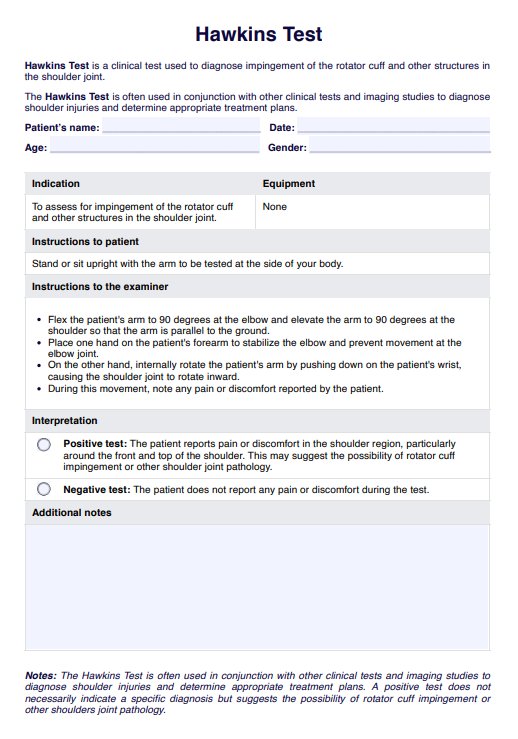The Hawkins Test is named after Dr. Kennedy Hawkins, an American orthopedic surgeon who described the test in 1980.

Hawkins Test
Learn all about the Hawkins Test, its scoring, and when to use it. Download a free PDF template and get a sample guide.
Hawkins Test Template
Commonly asked questions
To perform the Hawkins Test, the patient stands or sits upright with the arm to be tested at the side of their body. The examiner flexes the patient's arm to 90 degrees at the elbow, elevates the arm to 90 degrees at the shoulder, and then internally rotates the patient's arm by pushing down on the patient's wrist. During this movement, the examiner notes any pain or discomfort reported by the patient.
The Hawkins Test is used to diagnose impingement of the rotator cuff and other structures in the shoulder joint. A positive test may suggest the presence of rotator cuff impingement or other shoulder joint pathology.
EHR and practice management software
Get started for free
*No credit card required
Free
$0/usd
Unlimited clients
Telehealth
1GB of storage
Client portal text
Automated billing and online payments











